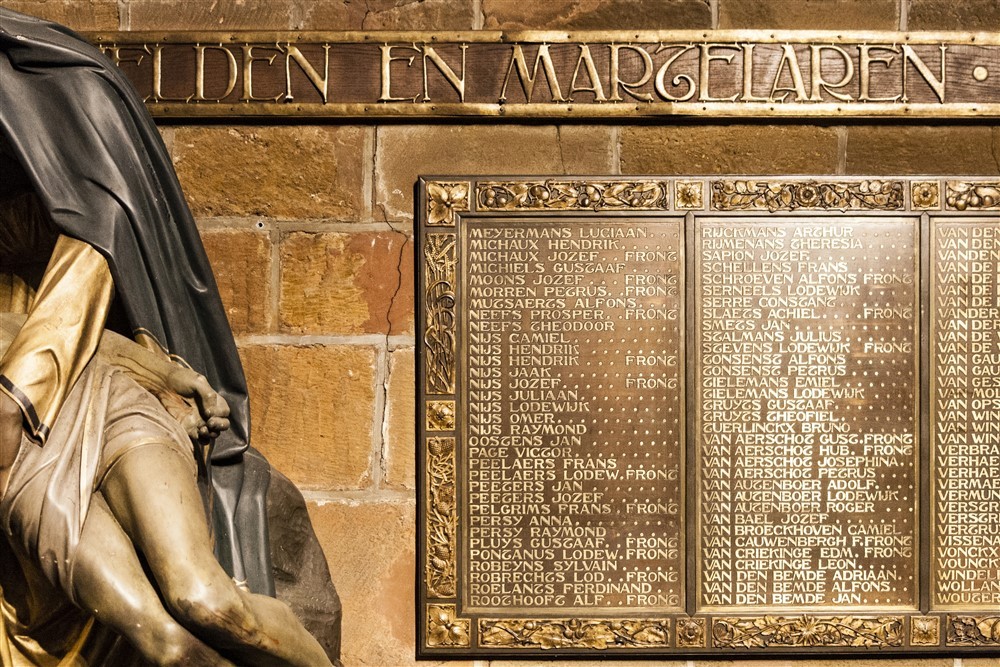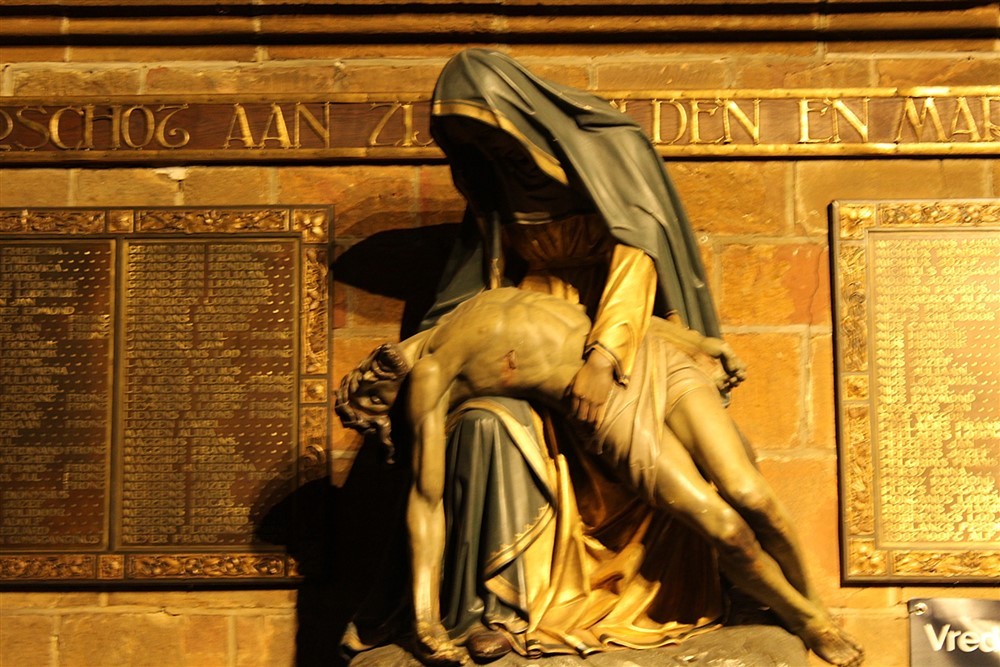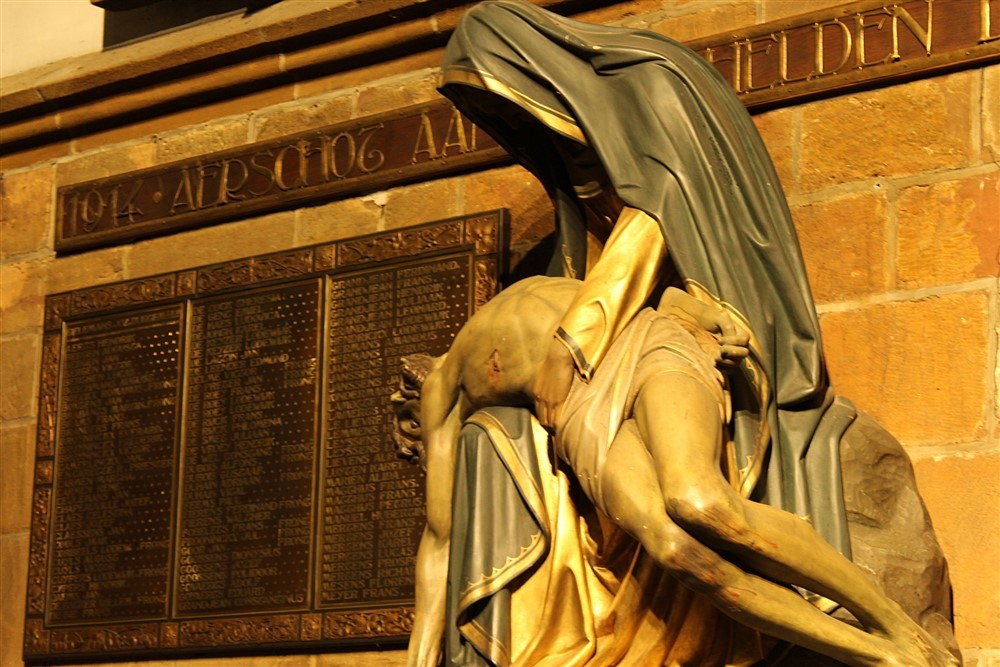Memorial Onze-Lieve-Vrouwekerk Aarschot
This memorial plaque was placed for all parishioners of Aarschot who were killed and killed during the First World War
The events
On August 19, 1914, in the morning, despite heavy resistance from the 9th and 26th Line Regiments, the German superior force occupied the city of Aarschot. Although the Belgian troops had withdrawn to the fortress of Antwerp, a shootout with alleged Francs terrorists arose in the late afternoon and the German commander Stenger was killed in the confusion. 173 civilians were executed in retaliation for this.
While the city was systematically set on fire on the days following August 19, it was miraculously unsuccessful to destroy the Church of Our Lady. Only parts of the church were burned. From August 21, the church was a gathering place for arrested citizens from Aarschot and Hageland during the coming weeks. Six to seven hundred civilians and 29 picpuses were detained for days in degrading conditions. From here, the captured men left on foot to the stations of Diest, Hasselt and Leuven to be taken to La Chartreuse in Liège or the prison camps in Germany. Many would return only after 100 days, very thin, some sick. Others never returned.
During the second outbreak of the Belgian army in September (9 to 13 September), the city was liberated for a few days. However, the Germans returned and for three months the church was used as a horse stable and barracks.
It was not until November 1914 that the Church was released by the Germans and that cleaning and preliminary restoration could begin. Despite the German occupation, the church was rededicated under jubilant chimes on December 6.
Background
Although the Catholic religious had often been the subject of suspicion, ridicule and humiliation during the advance of the German army, the Catholic Church strongly emerged from this war. Unlike the Belgian government in exile in Le Havre, it was present as an authority in occupied Belgium, always and everywhere, to provide moral support and relief for the population.
The memorial plaque
The Catholic Church was one of the first inspirers to commemorate all victims of the war and would give directives to parish priests as early as 1919 to establish local memorials. On February 17, 1923, a few months before the civil monument was to be inaugurated on the Grote Markt, this artistic copper plaque with 201 names was unveiled. The design is by Canon Raymond Lemaire, at that time a pivotal figure of Belgian religious architecture and the Liturgical Movement.
Do you have more information about this location? Inform us!
Source
- Text: Jan Rymenams
- Photos: Jan Rymenams
Nearby
Museum
- Stedelijk Museum, Room "War and destruction" Aarschot - Aarschot
- Allied Forces Museum Herselt - Herselt
- House of the Franco-Belgian Resistance - Tielt-Winge
Point of interest
- Peace Carillon Aarschot - Aarschot
- Glass Window Church Of Our Lady Aarschot - Aarschot
- Grote Markt Aarschot - Aarschot
Monument
- Memorial Stone Pieter-Jozef Dergent Aarschot - Aarschot
- Memorial Emile "Jules" Borremans Aarschot - Aarschot
- Jeweler Verhaeghen House Aarschot - Aarschot







